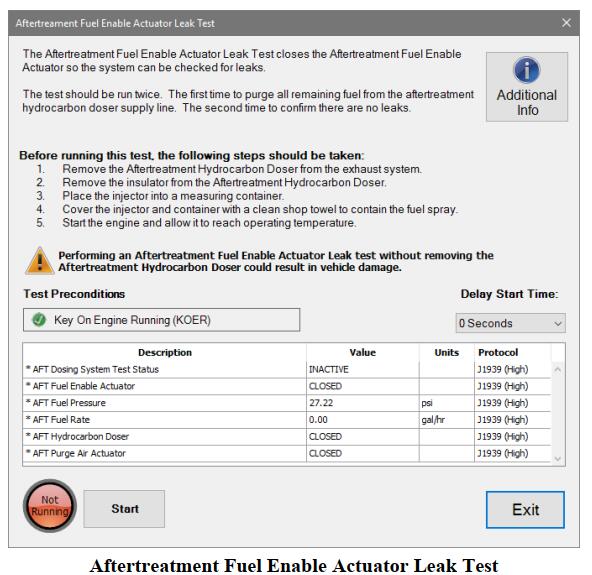The International A26 Engine Fuel Enable Actuator Leak Test by JPRO is a crucial diagnostic tool designed to detect and address potential leaks in the aftertreatment hydrocarbon doser. This test, which should be run twice, plays a vital role in ensuring the proper functioning of the aftertreatment system and preventing any potential damage to the vehicle. In this article, we will delve into the significance of this test, its step-by-step procedure, and its impact on overall engine efficiency.

Related Contents:
JPRO Noregon Commercial Fleet Diagnostics 2024 2019 Free Download
Noregon JPRO DLA+ 2.0 Adapter
Understanding the Aftertreatment Fuel Enable Actuator Leak Test:
The aftertreatment hydrocarbon doser is responsible for injecting precise amounts of hydrocarbon fluid into the exhaust stream to facilitate the regeneration process and reduce harmful emissions. However, over time, leaks can occur in the doser system, compromising its efficiency and leading to suboptimal engine performance.
The Fuel Enable Actuator Leak Test, offered by JPRO, is specifically designed to identify any potential leaks in the doser system. This test is performed in two stages: the first stage purges fuel from the doser supply line, and the second stage confirms the absence of any leaks.
Performing the Fuel Enable Actuator Leak Test:
Before initiating the test, it is crucial to remove the aftertreatment hydrocarbon doser to prevent any damage to the vehicle. Once this precautionary step is completed, follow the steps below:
1. Select “Aftertreatment Injector Activation for Flow Test” and press Enter or the Start button.
2. The test dialog will be displayed, providing instructions and preconditions for the test.
3. If desired, select a Delay Start Time and click the Start button to begin the test.
4. Once the test is completed, click the Exit button to return to the test selection dialog.
The Importance of the Fuel Enable Actuator Leak Test:
Regularly performing the Fuel Enable Actuator Leak Test is crucial for maintaining the efficiency and effectiveness of the aftertreatment system. By identifying and addressing any leaks in the doser system, this test ensures that the correct amount of hydrocarbon fluid is injected into the exhaust stream during the regeneration process. This, in turn, helps reduce harmful emissions and ensures compliance with environmental regulations.
Furthermore, addressing leaks promptly can prevent potential damage to the engine and other components. Leaks in the doser system can lead to improper combustion, reduced fuel efficiency, and increased engine wear. By detecting and fixing leaks early on, fleet managers and technicians can save on costly repairs and prevent unexpected downtime.
Conclusion:
The International A26 Engine Fuel Enable Actuator Leak Test by JPRO plays a vital role in maintaining the efficiency and performance of the aftertreatment system. By detecting and addressing leaks in the aftertreatment hydrocarbon doser, this test ensures optimal engine performance, reduces harmful emissions, and prevents potential damage to the vehicle. Fleet managers and technicians should prioritize the regular execution of this test to uphold environmental compliance, prolong engine lifespan, and minimize maintenance costs.
More topics about JPRO Diagnostic,please refer to:JPRO Diagnostics Guide